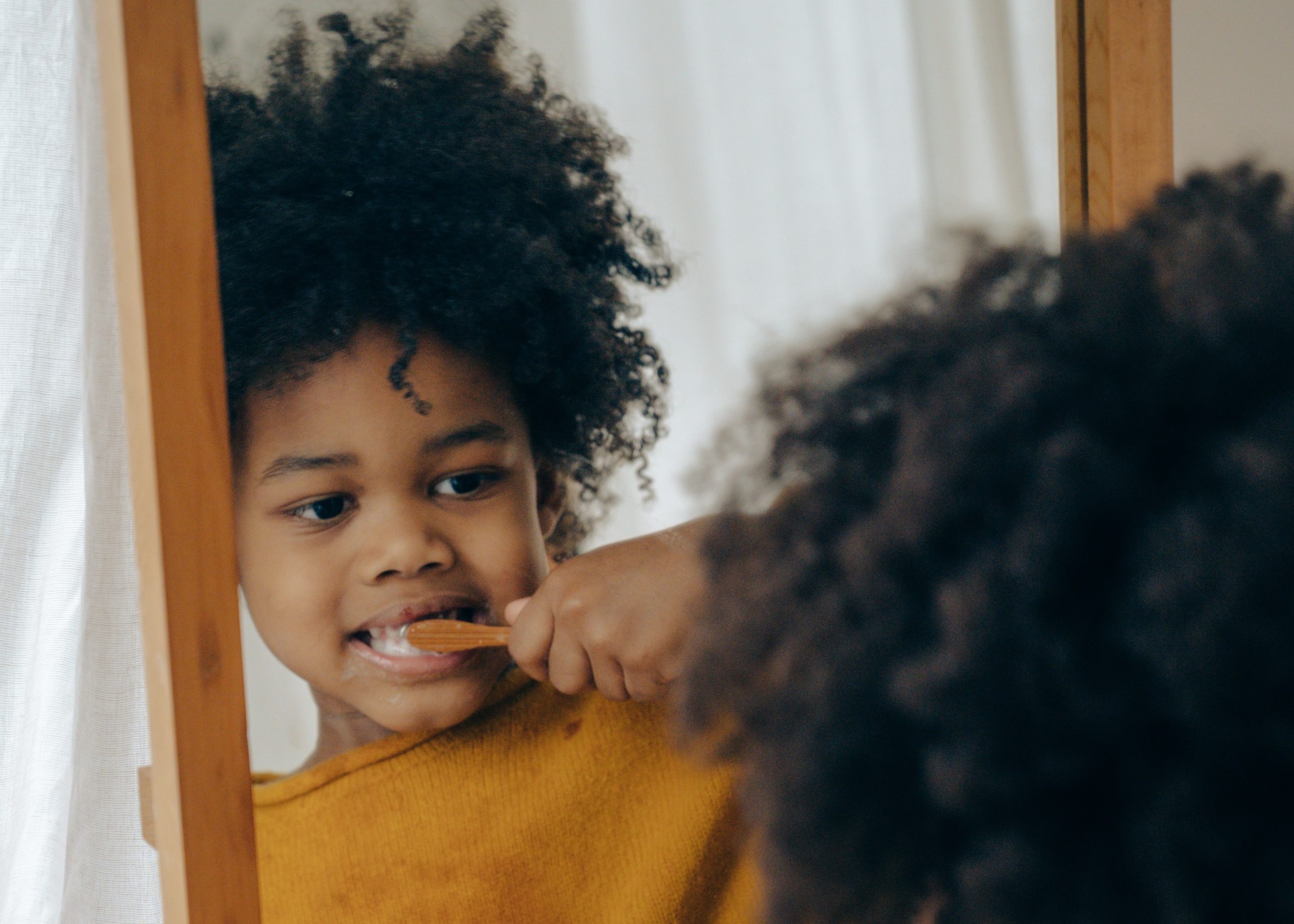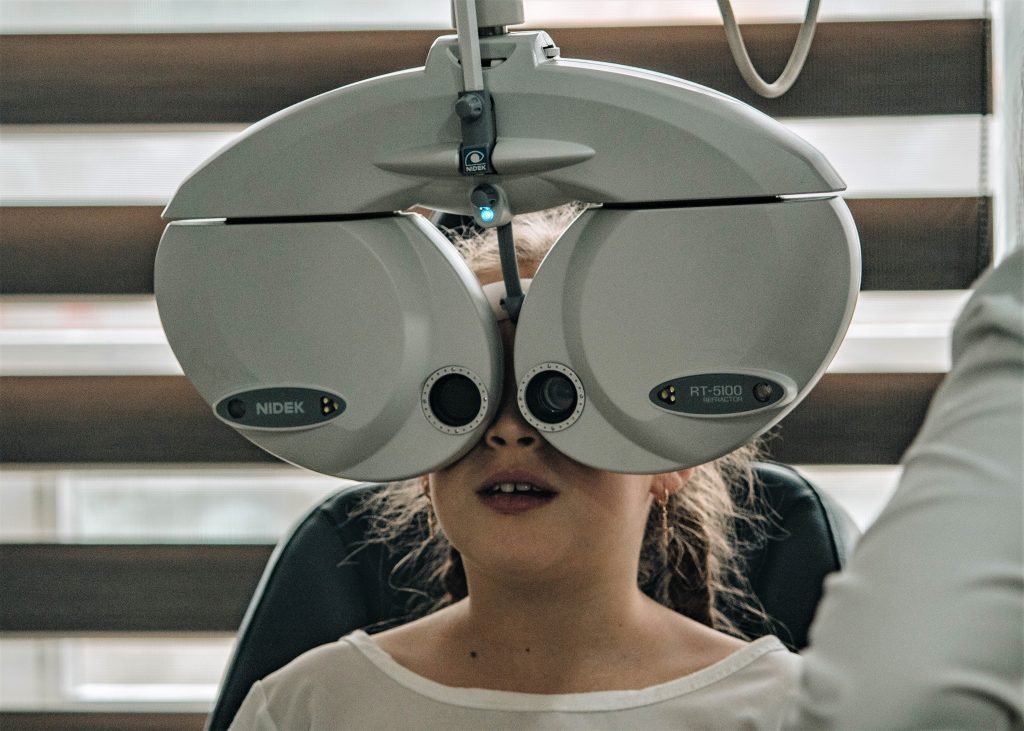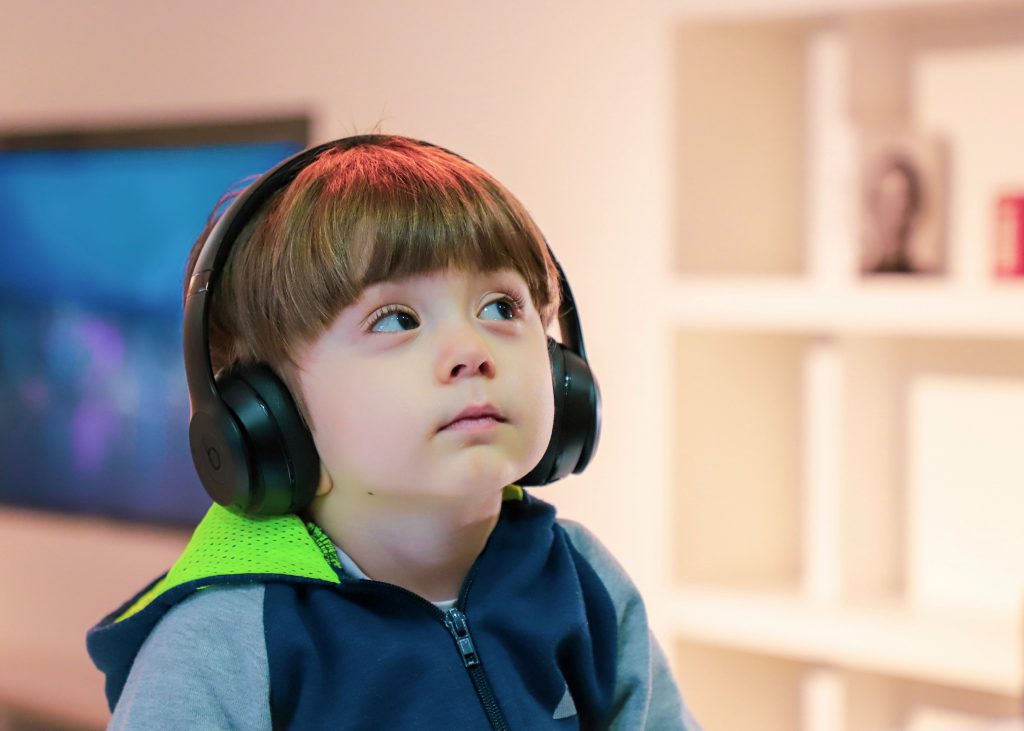
One of the most challenging aspects of raising children is caring for their health. In this article, we answer some frequently asked questions about children’s dental, vision and hearing care.
Children’s Dental FAQs
Q: When should I bring my child to their first dental exam?
A: The American Dental Association (ADA) recommends bringing your child to their first exam by age 1 at the latest.
Q: What is bottle rot and how do I prevent it?
A: Baby bottle tooth decay (also known as early childhood caries) is tooth decay in infants caused by prolonged exposure to sugary drinks (though milk residue can also cause decay). Parents can help prevent bottle rot by not putting their babies to bed with a bottle and not giving infants sugary drinks in any form.
Q: Are thumb sucking and pacifier habits bad for a child’s teeth?
A: They can be if they last too long. Thumb sucking in the age range of 1 to 3 usually isn’t a problem. Ideally, the habit is cured by the time the child turns 4. After children reach 4 or 5, sucking can cause skeletal changes that result in bowing between the front and back teeth.
Q: How often should my child see a dentist?
A: Children should visit the dentist once every six months for a routine checkup and cleaning. Plaque and tartar can start to build up on teeth within that time frame, so routine checkups can prevent bigger problems later.
Q: When should children start flossing?
A: A child should start flossing when they have two teeth that touch – typically between the ages of 2 and 3. Parents should floss for children when they’re younger, as children lack the motor dexterity needed to properly do it themselves. Children can usually begin flossing for themselves (with guidance) at around 8 years old.
Q: What are dental sealants and should my child get them?
A: Sealants have become standard in the dental industry as a means of preventing long-term issues with children’s molars. By covering the tops of molars, sealants help keep food particles out of the pits that toothbrushes and even floss can’t always reach. A child’s first molars appear around age 6 and second molars break through around age 12, so consider having sealants applied soon after.

Having children’s eyes checked early on allows vision care specialists to identify and treat issues preventatively.
Children’s Vision FAQs
Q: How can I tell if my young child has vision problems?
A: The American Optometric Association (AOA) provides the following list of signs that may indicate vision problems among young children:
- Sitting close to the TV or holding a book too close
- Squinting
- Tilting their head
- Frequently rubbing their eyes
- A short attention span for the child’s age
- An eye turning in or out
- Sensitivity to light
- Difficulty with eye-hand-body coordination when playing ball or riding a bike
- Avoiding coloring activities, puzzles and other detailed activities
Q: How can an eye doctor tell that a young child needs glasses?
A: Ophthalmologists use a technique called retinoscopy to determine the refractive error of the eye in preverbal children. The examiner uses a retinoscope to shine light into the child’s eye, and the reflection off the retina allows the examiner to measure refractive error and establish whether or not the child needs corrective lenses.
Q: What is “lazy eye”?
A: The AOA defines lazy eye, or amblyopia, as “the loss or lack of development of central vision in one eye that is unrelated to any eye health problem.” Fortunately, this condition can usually be prevented with early diagnosis and treatment.
Q: Will my insurance cover my child’s eye exam?
A: Pediatric eye care is a required benefit under the Affordable Care Act. Some private plans, however, may allow participants to opt out of vision care for both adults and children. Check with your insurance company to find out if your child has vision coverage.
Q: How can I help my child get accustomed to wearing glasses?
A: Optometrists agree that your best strategy is to involve your child in the process of choosing their glasses, which will help instill a sense of ownership. Additionally, they suggest choosing frames that your child finds appealing, whether it’s a favorite color or a design featuring a popular cartoon character.
Q: Is there anything I can do to strengthen my child’s eyesight?
A: Dr. Thomas Aller, president of Dr. Thomas A. Aller Optometrist, Inc., says the simplest way to maintain healthy eyesight in children is to get them out of the house on a regular basis. “Studies indicate that the more time young children spend outdoors, the less likely they are to develop nearsightedness or myopia.”

An important step in protecting a child’s hearing is limiting exposure to loud noises, including high volume levels on electronic devices.
Children’s Hearing FAQs
Q: What causes hearing loss in children?
A: For some children, it’s a genetic condition known as congenital hearing loss. More commonly, hearing loss is acquired, whether it results from infection, disease or overexposure to loud noises. While hearing loss from overexposure can occur during any stage of life, it’s more likely during the teenage years due to recreational activities like concerts and sports events, as well as occupational activities like mowing the lawn and operating machinery.
Q: When should I have my child’s hearing tested?
A: Your child’s hearing will be evaluated at regular checkup appointments with their primary care physician. A child’s first hearing test typically occurs at 6 months of age. This early testing allows physicians to implement preventative treatment for any diagnosed hearing issues. If a more in-depth hearing evaluation is required, you may be referred to an audiologist: a licensed health professional who specializes in the diagnosis, evaluation and rehabilitation of nonmedical (not associated with a disease) hearing loss.
Q: What are some signs that my child has hearing loss?
A: Common signs of hearing loss in children include:
- Delayed speech/language development
- Child doesn’t respond to their name being called
- Difficulty articulating certain speech sounds
- Frequently asks for repetition when spoken to
- Not noticing or responding to sounds in the immediate environment
- Trouble following verbal directions
- Turning up volume on electronics to high levels
- Not startled by loud noises
Q: What can I do to protect my child’s hearing?
A: Take the following basic measures to protect your children’s hearing:
Limit exposure to noise. This includes both volume level and duration of exposure. According to audiologists, exposure to noise in excess of 85 decibels for more the eight hours in a day can potentially be unsafe. To measure the decibel level of noise exposure in a given environment, you can download a free decibel meter app on your smartphone. In situations where exposure to potentially harmful sounds is likely (concerts, fireworks, lawnmowers, etc.), encourage children to use earplugs or protective ear muffs.
Limit the volume level of electronic devices. Set the volume on your children’s devices to the lowest level that can still be clearly heard. In general, you should avoid letting a device’s volume level exceed 60 percent of its maximum output. Take advantage of the built-in volume-limiting feature that comes standard on most devices.
Create a quiet home environment. If you live in a noisy area, keep windows and doors closed to minimize potentially harmful outside sounds. Utilize soft interior furnishings such as curtains, cushions and carpets, which help absorb sound. More intensive measures include replacing old window glass with dual- or triple-pane glass and adding insulation to your exterior walls. In addition to reducing noise levels, these measures can reduce your energy bills in warm and cold seasons.
To find a Diamond Certified health care professional in your area, visit www.diamondcertified.info.
